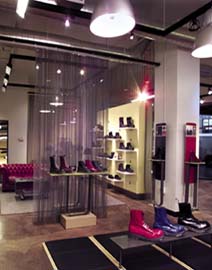A band called Good Charlotte played a 45-minute concert at the grand opening of the Dr. Martens flagship store in Portland, Ore. Quite fitting, considering that the culture of Dr. Martens'loyal fans is so rooted in British rock.
“The band actually set up in the corner of the store,” says Dan Hones, vp and general manager of Displayworks design firm (Beaverton, Ore.) “The fixturing is on wheels – even some of the walls move – and we adjusted the lighting. It worked out perfectly.”
The Dr. Martens flagship store in Portland, Ore., gives an industrial-looking home to its iconic footwear, without being too rough: the HVAC and sprinkler systems remain exposed and polished concrete composes the floor, while the shoes rest on smooth shelving and table fixtures neatly stamped with the brand insignia. The dimpled leather couches are reminiscent of Dr. Klaus Maertens'own 1940s podiatry office.
The new concept, designed for Portland-based Dr. Martens Airwair USA and orchestrated by Displayworks, originated from Dr. Martens'new trade show program. In the process of devising a branded look for the company's booths, Displayworks created a whole rollout retail concept.
The classic Dr. Martens products began as work boots in the U.K., designed by podiatrist Dr. Klaus Maertens to have unique air-cushioned soles – a precursor to modern wonders like Nike Air. Still handmade in England, the shoes have reached counterculture-icon status, providing a rich heritage for the brand's store design.
Advertisement
“The previous brand image in America was industrial, almost deconstructivist,” explains Hones. “A lot of heavy metals, timbered wood; rust was even desirable.” In contrast, Europe coddled Dr. Martens with white finishes, frosted glass and gleaming stainless-steel – a clinical tone in boutique-like environments. The goal of the trade show program and the new rollout was to find a happy medium between the retro rust and the euro-clinical.
The 2500-square-foot prototype in Portland, the only existing Dr. Martens U.S. location, boasts cleaner metals, such as powdercoated steel that is neither highly polished nor corroded. Because the corporate colors are yellow and black, the walls have been painted a bright yellow. Quotes in large, black lettering, such as “God Save the Queen” and “History Has Been Made by Those Who Say No,” adorn the walls. “We want people to immediately associate the yellow and black with Dr. Martens, just like people see blue and think, 'Oh, Intel,'” says Hones.
The space was previously another footwear store called London Underground – ideal because locals already associated the location with shoes. Displayworks gutted the interior; such elements as the flooring had to be upgraded, since the space existed at two awkward height levels instead of one. Now, the concrete flooring is acid-washed to create a brown, patina-looking finish. Embedded in different points are small steel plates arranged in cross shapes, one of the Dr. Martens insignias.
Fresh “light clouds” were installed, a collection of compact fluorescent, PAR30 spotlight lamps and MR-16s in 10-foot-by-10-foot steel frames that hover over certain merchandise areas. The 121/2-foot ceilings allowed the HVAC and sprinkler system to be exposed, while the lighting rests at about 10 feet. “We chose the fluorescent lights based on their color temperature,” says Hones. “We wanted ones that would give the footwear its most natural hues.”
Because the store has become a hangout for visiting rock bands, a coil drape allows a section of the space – the Artists'Chill-Out Zone – to be partitioned for the musicians'privacy. That area's products are double-merchandised elsewhere in the store.
The square-shaped space, which houses 500 square feet of storage, was divided into five 14-foot-by-14-foot bays created by the building's columns. The back yellow wall is the heritage area, with only Dr. Martens'classic footwear, such as the original 1460 boot. Freestanding display pedestals flank the wall with archival photographs and boots, part of customers'education of Dr. Martens'history. “This is not Planet Hollywood,” says Hones. “The visual merchandising is subtle. The illuminated product, along with some signed memorabilia from band members, speaks for itself.”
Advertisement
Adjacent to the heritage area is the seasonal area, which changes regularly. The cashwrap is tucked in the corner, out of the way of retail flow. A kids'corner offers children's footwear, while more feminine merchandise is found on the women's side of the store. “But the product is unisex, anyway,” Hones explains.
Most unique is the “Artists'Chill-Out Zone,” which can be partitioned off from the rest of the store by a mesh-like coil drape. When musicians like Good Charlotte aren't visiting, the area is for merchandising, but it quickly transforms into a private area for bands by enclosing it with the wire curtain.
“In Portland, when bands came to play, they used to head to Dr. Martens headquarters to get their free boots, take pictures and sign autographs,” notes Hones. “But now they come directly to the store.”Client Design Team: Dr. Martens, Portland, Ore. – Kimberly Barta, communications manager; Mickey Chandler, general manager, retail
Design Team: Displayworks, Beaverton, Ore. – Dan Hones, principal-in-charge, lead designer; Steve Cook, creative director; Kristi Gegner Nangle, director of retail development
Outside Design Consultants: Rise Group, Chicago; Mulvanny G2 Architects, Bellevue, Wash.
Suppliers: Muzak, Portland, Ore. (audio/video); P C Construction Co., Portland, Ore. (ceilings and flooring); Cascade Coil, Portland, Ore. (wire mesh); Big Graphics, Portland, Ore. (graphics); Light Design Center, Portland, Ore. (lighting)
Advertisement
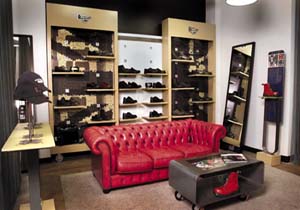

 Headlines2 weeks ago
Headlines2 weeks ago
 Headlines2 weeks ago
Headlines2 weeks ago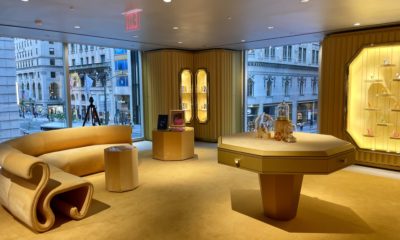
 Eric Feigenbaum6 days ago
Eric Feigenbaum6 days ago
 Headlines1 week ago
Headlines1 week ago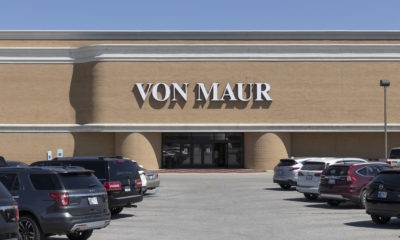
 Headlines5 days ago
Headlines5 days ago
 Headlines1 week ago
Headlines1 week ago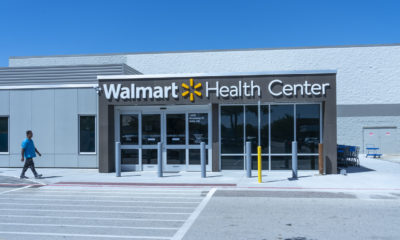
 Headlines6 days ago
Headlines6 days ago
